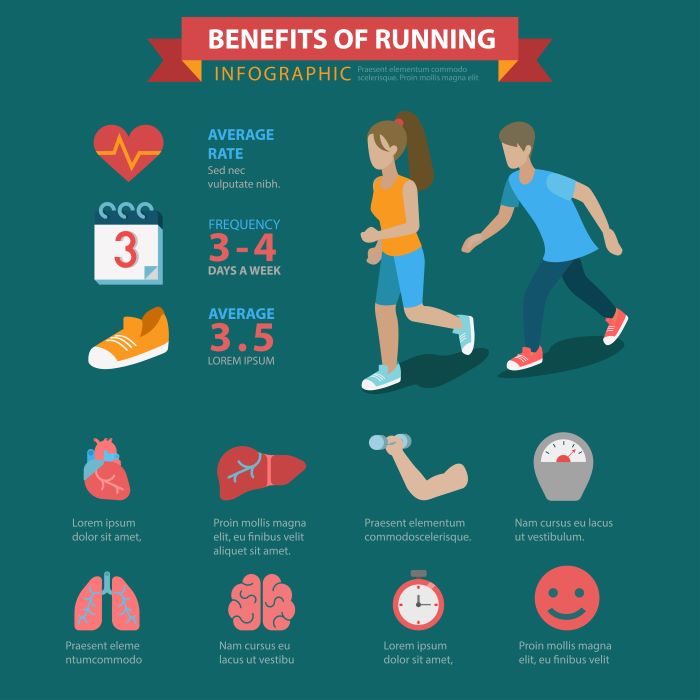Welcome to the exciting journey of B.A.A. Half Marathon Training Level 1! This level is designed specifically for novice runners or those returning to running after a break. The B.A.A. Half Marathon is not just a race; it’s an experience filled with community spirit, scenic trails, and personal achievement. As you embark on this training path, you’ll discover that every step you take brings you closer to both your fitness goals and the thrill of crossing that finish line.
Training at this level focuses on building a strong foundation. Key components include:
- Incremental Mileage: Gradually increasing your running distance helps to build endurance without risking injury.
- Structured Workouts: Tailored workouts will introduce you to various running techniques, ensuring a well-rounded training approach.
- Community Support: Engaging with a vibrant running community provides motivation and camaraderie, making your training sessions enjoyable.
At Run Just For Fun, we believe that running is more than just a sport; it’s a lifestyle that promotes health and happiness. Visit our website to learn more and get started today! Click here.
Understanding the Importance of Structured Training

Structured training is a critical aspect of preparing for the B.A.A. Half Marathon, especially at Level 1. It provides a clear roadmap to help runners progress safely and effectively. By adhering to a structured plan, you can focus on specific goals and track your development over time.
Here’s why structured training is essential:
- Enhanced Performance: A well-structured plan incorporates various types of workouts, including long runs, speed work, and recovery runs. This variety helps improve your overall running performance and efficiency.
- Injury Prevention: Gradually increasing intensity and mileage minimizes the risk of injury. Structured training helps you listen to your body and adapt your plan as needed.
- Motivation and Accountability: Following a structured program creates a sense of commitment. It encourages you to stay on track, knowing that each workout builds towards your ultimate goal.
- Measurable Progress: With a defined training schedule, you can easily assess your improvements. Regular check-ins on your performance allow you to celebrate achievements and adjust your training as necessary.
By understanding and embracing the importance of structured training, you set yourself up for a successful and enjoyable experience as you prepare for the B.A.A. Half Marathon.
Key Components of Level 1 Training Plan

A comprehensive Level 1 training plan for the B.A.A. Half Marathon includes several key components designed to build a solid foundation for novice runners. Each element plays a crucial role in ensuring a balanced and effective training regimen.
Here are the essential components to incorporate into your Level 1 training plan:
- Base Mileage: Establishing a strong base is fundamental. Start with shorter distances and gradually increase your weekly mileage. Aim for consistent runs that reinforce endurance and stamina.
- Long Runs: These runs are vital for building endurance. Schedule a weekly long run that increases in distance, allowing your body to adapt to longer durations on your feet.
- Speed Work: Integrating speed workouts, such as intervals or tempo runs, helps improve your pace and running efficiency. These sessions should be carefully balanced with recovery workouts.
- Cross-Training: Including activities like cycling, swimming, or strength training can enhance overall fitness while providing a break from running. It helps to prevent burnout and reduces the risk of injury.
- Rest and Recovery: Don’t underestimate the importance of rest days. They are crucial for muscle recovery and preventing overtraining. Ensure your plan includes ample time for recovery to promote long-term success.
By incorporating these key components into your Level 1 training plan, you’ll create a well-rounded approach that prepares you for the challenges of the B.A.A. Half Marathon.
Essential Gear for B.A.A. Half Marathon Training

Having the right gear is crucial for a successful B.A.A. Half Marathon training experience. The right equipment not only enhances your performance but also ensures comfort and safety during your runs. Here are some essential items to consider:
- Running Shoes: Invest in a quality pair of running shoes that provide adequate support and cushioning. It’s advisable to visit a specialty running store for a fitting to find the perfect match for your foot type and running style.
- Moisture-Wicking Clothing: Opt for breathable, moisture-wicking fabrics that help regulate your body temperature and keep you dry. This includes tops, shorts, and socks specifically designed for running.
- Hydration Gear: Staying hydrated during your training is paramount. Consider carrying a handheld water bottle, a hydration belt, or investing in a hydration pack for longer runs.
- Running Watch or Fitness Tracker: Monitoring your pace, distance, and heart rate can be beneficial for your training. A reliable running watch or fitness tracker can help you stay on track with your goals.
- Safety Gear: If you’re training during low-light conditions, prioritize safety with reflective gear or LED lights. A good running light or reflective vest ensures you’re visible to others.
By equipping yourself with these essential items, you’ll not only enhance your training experience but also prepare yourself for the demands of the B.A.A. Half Marathon.
Nutrition Tips for Optimal Performance
Nutrition plays a vital role in achieving optimal performance during your B.A.A. Half Marathon training. Proper fueling can enhance your endurance, speed up recovery, and improve overall well-being. Here are some essential nutrition tips to keep in mind:
- Balance Your Macronutrients: Focus on a well-rounded diet that includes carbohydrates, proteins, and healthy fats. Carbohydrates are essential for energy, while proteins aid in muscle recovery. Healthy fats support long-term energy needs.
- Stay Hydrated: Hydration is key to maintaining peak performance. Ensure you drink enough water throughout the day, and consider electrolyte drinks during longer runs to replenish lost minerals.
- Pre-Run Fueling: Consume a light meal or snack rich in carbohydrates about 30 to 60 minutes before your run. Options like bananas, oatmeal, or energy bars can provide the quick energy needed to start strong.
- Post-Run Recovery: After your training, prioritize recovery by consuming a combination of protein and carbohydrates. A protein shake with a banana or a turkey sandwich can help replenish glycogen stores and repair muscles.
- Listen to Your Body: Pay attention to how different foods affect your performance and recovery. Everyone’s body reacts differently, so keep a food diary to track what works best for you.
Implementing these nutrition tips into your training routine can significantly enhance your performance and help you feel your best as you prepare for the B.A.A. Half Marathon.
Joining the Running Community for Support

One of the most rewarding aspects of training for the B.A.A. Half Marathon is the opportunity to connect with a vibrant running community. Joining a community not only provides motivation and accountability but also enhances your overall running experience. Here’s how engaging with fellow runners can benefit you:
- Shared Knowledge: Being part of a running community allows you to learn from others’ experiences. Engage in discussions about training techniques, nutrition tips, and race strategies. The insights you gain can be invaluable.
- Motivation and Accountability: Training with others can help keep you motivated. Whether it’s a local running club or online groups, having a support system encourages you to stick to your training schedule and push through tough workouts.
- Social Connections: Running is not just about miles; it’s about building friendships. Many runners find lifelong friends within their community, making training sessions and races more enjoyable.
- Participation in Events: Many running groups organize fun runs, training sessions, and race events. These gatherings can help you prepare for the B.A.A. Half Marathon in a supportive environment while also creating lasting memories.
As you embark on your training journey, don’t underestimate the power of community. Visit our website to learn more and get started today! Click here.


